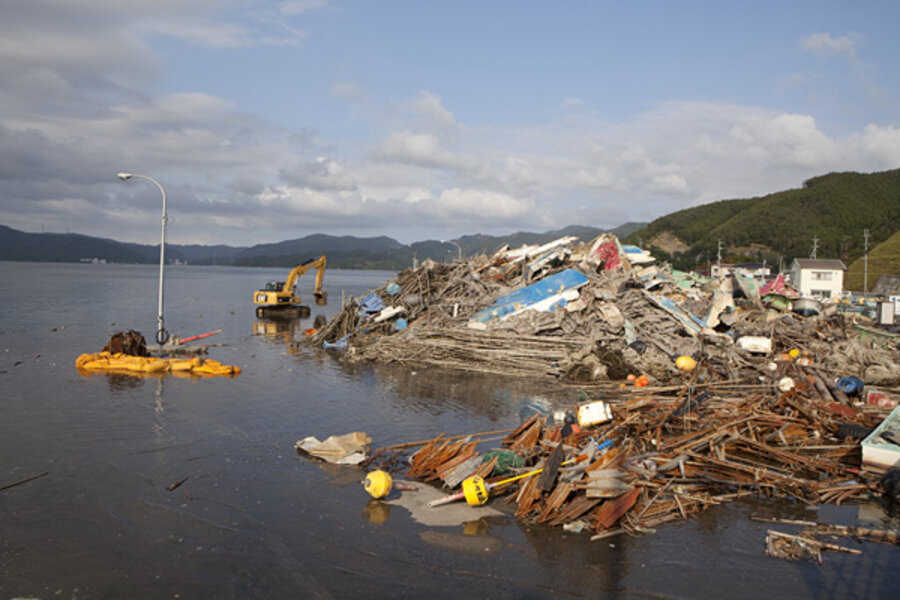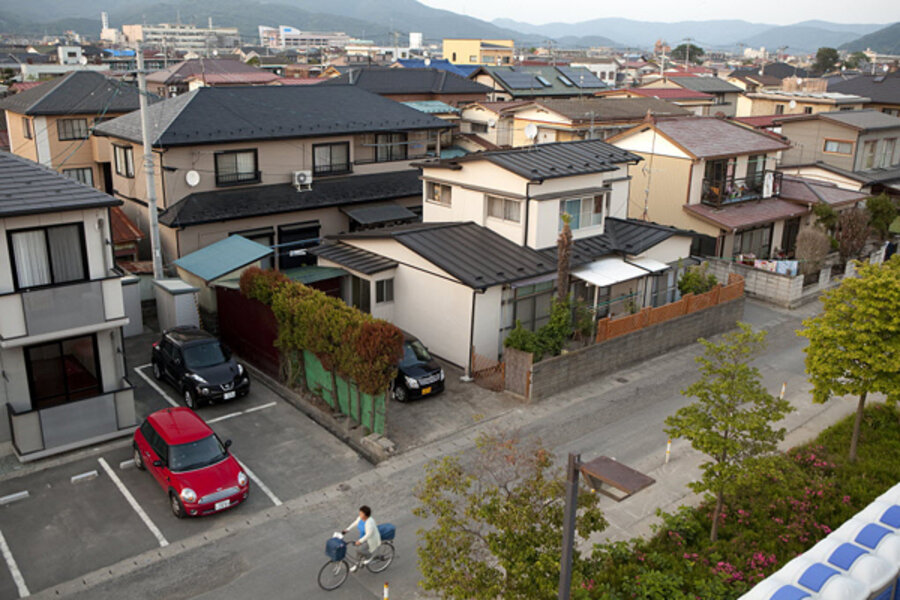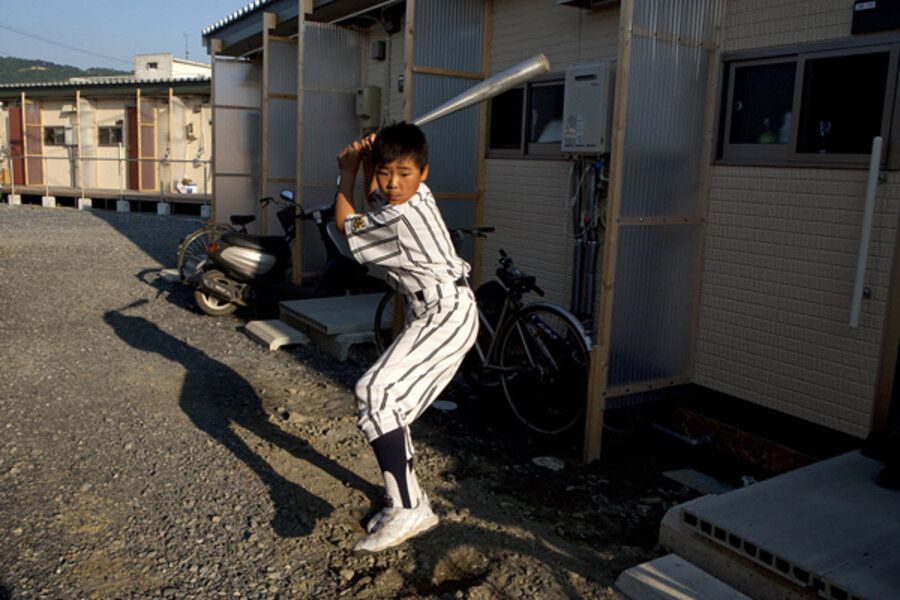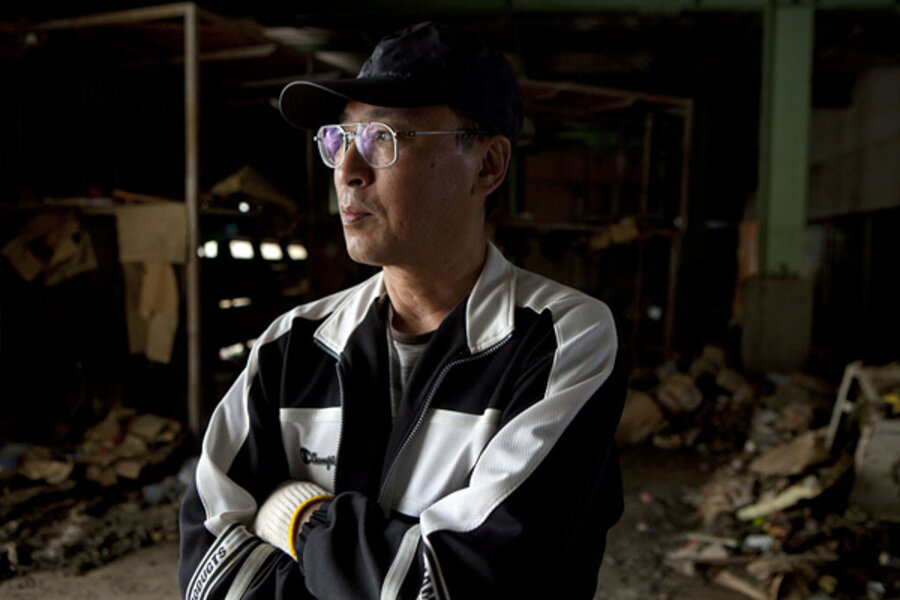Japan's tsunami recovery stalls
Loading...
| Ishinomaki, Japan
Hisashi Takamatsu reaches into a hole in the rubble-strewn ground outside his idled fish-packing plant and turns a valve. Nothing happens, but he does not seem surprised.
Still no water.
Nor is there yet any electricity in the "Fish Town" district of this port city. Nor does Mr. Takamatsu have any clear news from the government about how much compensation he might get for everything he lost when a tsunami wrecked all his machinery on March 11.
"I know nothing about my future," he says bleakly.
Around the corner, Kazuko Kobayashi is visiting her former home, picking through water-stained photos in the albums she has rescued. Outside, soldiers clear debris – still searching for and sometimes finding corpses. The stench of rotted fish hangs in the air. Only the cawing of carrion crows breaks the silence of the abandoned streets.
Three months after Japan's largest-ever earthquake and a devastating tsunami hit the northeastern coast, most local residents still seem in limbo. Political wrangling and bureaucracy in Tokyo have compounded the massive scale of the twin disasters to make recovery frustratingly slow, say politicians and citizens here.
"On a recovery scale of zero to 10, some parts of Ishinomaki are at zero and some are at one," says the city's mayor, Hiroshi Kameyama. "Nowhere is better than that."
Across the disaster-hit region nearly 100,000 people are still sleeping on the floor in gymnasiums, schools, and community centers. Only half of the 52,000 temporary homes that the government requested have been built. Businesses starved of funds by the lack of a government aid budget – held up in a fractious parliament – are paralyzed. Unemployment rates here have soared to four times the national average.
Some observers blame the size of the tsunami for the slow progress. "The damage is so severe it is beyond the capacity of Japan to mend" without help, says Sayako Nogiwa, an aid worker who is now running operations in the earthquake zone for the nongovernmental organization Association for Aid and Relief.
Japanese politics: business as usual
Others blame Japan's squabbling politicians. Every bill must be painstakingly negotiated with the opposition Liberal Democratic Party. It took until June 20 before a basic law on reconstruction was enacted. Parliament extended its current session by 70 days last month so as to debate a second supplementary budget and a bond issue to fund this year's deficit – both critical to the northeast's economic recovery. But the opposition has withdrawn from an agreement to guarantee passage of the two bills because Premier Naoto Kan has refused to set a firm date for his resignation.
"Each political party is working for its own interests," complains Ishinomaki Mayor Kameyama, an independent. "If the government is constantly unstable, the legislative process is slowed down. Financial support from the central government is key to rebuilding the port here and to investing in industry. But we have no clear answers because the budget has not been agreed [upon]."
Waiting for aid
Takamatsu, who inherited the "Sanriku Foods" fish-packing factory when his father drowned in the tsunami, says, "It will cost a lot to replace all the machinery." His insurance will cover only part of those costs. None of the low-interest loan schemes he has heard of will offer what he needs to restart, Takamatsu says, "so I hope a better system will be introduced. Politics is very unstable at the moment, so I'll wait and see what happens." He adds, "I was expecting a second budget this year, but maybe even that won't provide a solution."
Down the coast in the port of Sendai, the manager of a municipal day-care center for disabled people is also waiting for the authorities to make a plan for the future. The center was damaged in the earthquake, says Kazuko Shimokoriyama, "and I've been several times to the city council about funds for repairs but they are not very willing to help us.
"They said they were waiting for the central government's reconstruction plan," she explains. "We are helpless."
Farther north, in the tiny fishing port of Ozashi, nestled in a startlingly beautiful cliff-lined cove, seaweed farmer Hiroshi Abe has run into a similar problem – the often rigid Japanese bureaucracy.
Like fishermen up and down the coast, Mr. Abe lost his boat in the tsunami.
Taking matters into their own hands
When the government set aside 19.8 billion yen ($24.75 million) in its first post-disaster budget last April to help fishermen buy new boats, Abe went to the local office of Japan Fisheries, the parastatal cooperative that runs the nation's marine industry, to apply for compensation.
"I was asking all the time how to apply, but nobody at the office knew," he complains. "They just told me to wait" until they got instructions, which arrived after two months.
"There's a strict hierarchy, from the central government to the prefecture to the city to my branch of Japan Fisheries," he explains. "It takes a long time for orders to be passed down."
Abe is about to move from the cramped community center where he has been living since March with two dozen other villagers into one of 15 prefabricated "minihouses" nearby. If they had waited for the local government to allocate and clear land for the temporary homes "it would have taken a long time," he says. So three families donated their private land, and villagers rounded up volunteers to help clear and level it themselves.
It is a similar sense of initiative that has propelled Yoshiaki Kanno to reopen his family's tofu business – the oldest tofu factory in Sendai, he says proudly.
Mr. Kanno's home burned down after the earthquake, but his small factory next door survived, even if all the machinery was rendered unusable by the seawater that rose above head height.
"I thought I'd have to close, but my younger sister told me I had to keep the business going," he says. "And when I was living in an emergency shelter I met a lot of customers who encouraged me to start again."
So he claimed his earthquake insurance, took out a private bank loan, dug into his savings, and scraped together enough money to rehabilitate the factory and buy secondhand machinery from other tofu manufacturers who had gone out of business after the earthquake.
On a recent afternoon he was busy supervising electricians who were hooking up the machines. He was planning his first production-line test run a few days later.
"If I had depended on government money it would have been impossible to do this," he says. "The government is so slow."
Kanno is one of the fortunate few to have insured his business against earthquakes, and to have a sympathetic bank manager, along with some savings. He is also blessed with self-confidence: "If you believe strongly enough, you can do it," he says.
But he acknowledges that he is unusual. "Why are there still so few signs of recovery?" he asks rhetorically: "Because of the shortage of finance. A lot of business owners I know are very depressed. They just don't have the motivation to start again."
Related video:
[ Video is no longer available. ]








